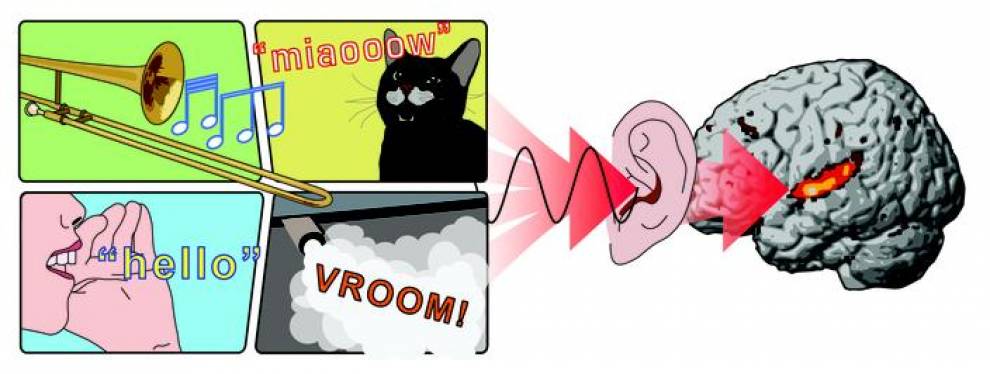This research programme uses complex sound in the form of speech, environmental noises, voices and music to probe brain network dysfunction and disintegration in a range of dementia diseases.
Our goal is to identify clinically relevant pathophysiological signatures of these diseases. The work rests on a multi-modality approach including neuropsychological and behavioural tests, physiological techniques, structural and functional brain imaging. We aim to define auditory profiles of dementia diseases and correlate these with alterations in brain structure and function.
Current specific projects address a wide range of perceptual, cognitive and emotional brain processes in patients with dementia, ranging from localisation of sounds in space to the understanding of mental states as represented in music.
The picture below illustrates how different types of sounds are interpreted from signals that reach our ears. Our brains must analyse these signals to make sense of what we hear. Some of the brain areas involved in auditory information processing may be affected in people with dementia, and this can influence how they hear and understand different types of sounds.

On the left: music, animal and machine sounds, the identity and contents of speech. On the right: The red and yellow blobs on the brain represent where there is more activity when we listen to sounds.
 Close
Close


